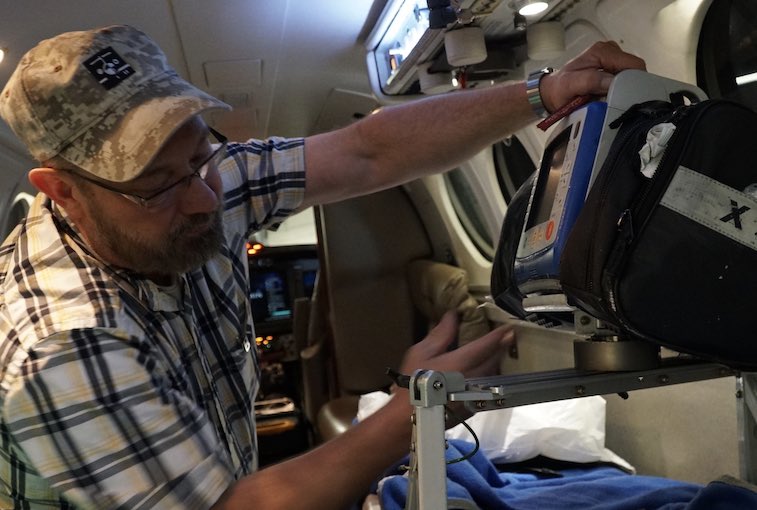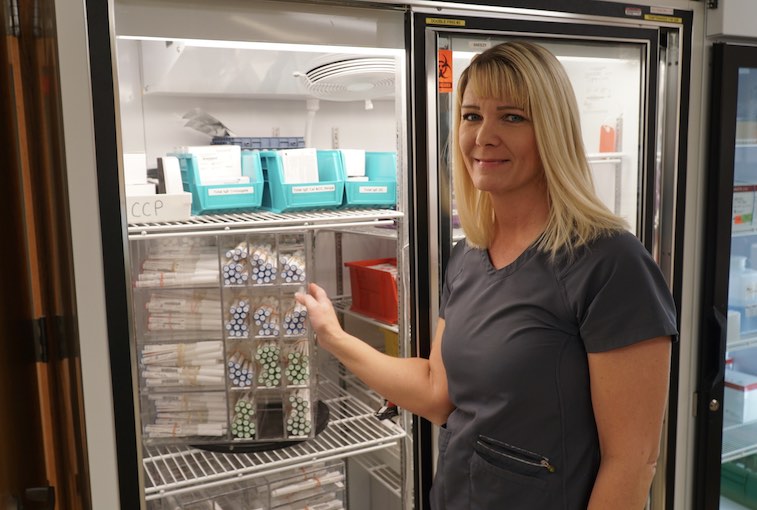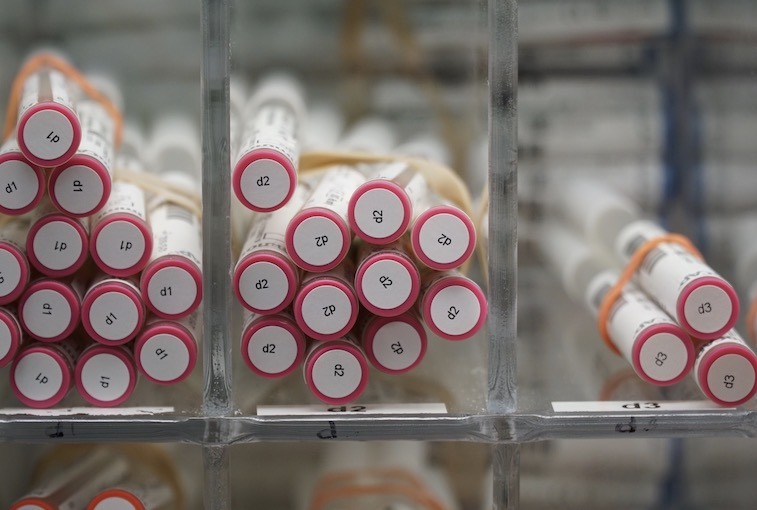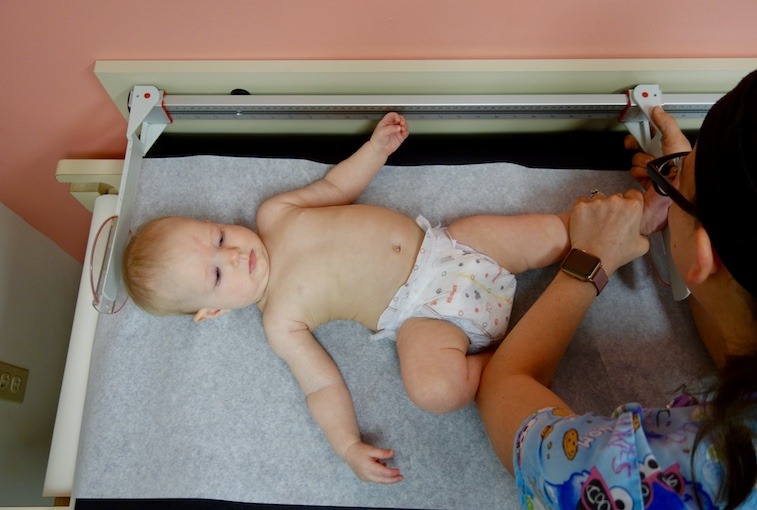Greg Lostroh’s first innovations go back to the late 1970s when top managers at what was then Sioux Valley Hospital in Sioux Falls, South Dakota, asked him to retrofit a King Air airplane so it could carry patients.
Health systems were starting to use helicopters as air ambulances. But there weren’t a lot of options on the market for airplanes, which are faster, cheaper to operate and capable of flying longer distances, he said.
Enlarge

“They were rare. Most air transports were a throw-together deal where you throw someone on a stretcher and tie it down. Sioux Valley was dedicating an airplane for air transport and wanted an interior just for that purpose. It was in the infant stages of what we see today,” said Lostroh, who at the time worked for Business Aviation, which contracted with Sioux Valley Hospital. “In rural areas where there are long distances, the fixed-wing aircraft do the bulk of the work.”
Sanford AirMed, one of the largest air ambulance services in the U.S., now has four airplanes and four helicopters stationed in Sioux Falls; Fargo and Bismarck in North Dakota; and Bemidji, Minnesota.
Lostroh, who manages aircraft maintenance for the Sioux Falls fleet, joined what is now Sanford Health in 1990. Along with a team that included welder Mike Soward and sheet metal expert Tim Ingalls, he has innovated numerous ways to reduce weight, increase space for medical teams and improve safety.
“Our program has influenced the direction of the manufacturers of the air ambulances, primarily in the retention of medical equipment in the aircraft. We definitely were in on the beginning of that,” Lostroh said. “It started out: We got a problem and there’s no one else to solve for it, so we would solve the problem.”
Lostroh recruited Ingalls from Edwards Air Force Base in California, where he was experimenting with the F-16 fighter jet.
“He was the next step in the evolution of these interiors,” Lostroh said of Ingalls. “We went from the infant stages that were crude but effective. He started building them with better workmanship.”
Needed to help infants
Ingalls, using computer-aided programs to design parts, determined what worked and what didn’t through trial and error to ensure ideas met Federal Aviation Administration regulations.
Enlarge

“The biggest fear is an airplane crash that’s survivable. You don’t want a 20-pound monitor hitting someone in the head when it’s preventable,” Lostroh added. “There’s always been FAA regs. But with the air medical industry, the FAA sort of didn’t know what to do with it. Take an incubator to hold premature babies. How do you legally strap down a 2-pound baby? There were things like that.”
A high infant mortality rate on the Rosebud Indian Reservation, 200 miles west of Sioux Falls, actually prompted the effort to retrofit an airplane, he said. “That’s what really drove it, in the early days, is the babies on the reservation.”
Lazy Susan for allergy sticks
For Brenda Gilbertson, the problem to solve was a crowded refrigerator.
Enlarge

She’s the lead medical technician at the Sanford Reference Laboratory in Sioux Falls that processes the bulk of the health system’s patient allergy tests, which have increased both in volume and type.
“Every allergen has its own stick, and they were in this jumble of buckets and were not accessible, and we need to load sticks every day. We were spending way too much time trying to find what we were looking for. We came up with this carousel that everybody could use,” said Gilbertson, adding that she’s “very organized.”
She drew up plans on a piece of paper and gave it to maintenance guys who affixed plexiglass bins to a couple of Lazy Susans. The two rotating shelves organize all 142 allergy sticks by color, such as blue for foods and green for grass and mold. Each stick has a number indicating the specific allergens for which the doctor wants to test. The shelves give everyone easy access and make the right sticks easy to spot.
“Our workflow is we receive patient samples and import those samples into the instrument, and we ask the instrument what do you need to run all of these patients, and it gives us a list of the sticks to load,” Gilbertson said. “We’re not going to get more people, so we have to manufacture time.”
Enlarge

2-in-1 baby table
Jim Engelstad, a project manager in enterprise support services in Fargo, came up with another time- and space-saving idea.
He had worked in the former continuous improvement office when Sanford Health built the Moorhead, Minnesota, clinic. One of the goals was to maximize space.
“We very intentionally decided to meet with the staff to come up with how they wanted patients to flow through that clinic before we met with the architects. The staff said they wanted to do as many tasks in the exam room as possible, so they could check patients in and get them right back to an exam room,” Engelstad said.
Enlarge

It was easy to find space in each room for an adult scale. For the 12 pediatric rooms, he sketched out an idea and worked with cabinet makers to retrofit exam tables that have a built-in scale. Besides saving the time of putting babies down twice, once on the scale and then the exam table, the two-in-one scale allows parents to undress them once and stay in the room.
“Parents have coats and car seats, and now you’re taking the clothes off down to the diaper for the baby, and now they say let’s go to the exam room, and they’re carrying the baby and all the coats. It definitely is efficient but also a patient satisfier,” said Engelstad, who may see if there’s commercial interest in his idea.
Other innovations
Sanford Health already has had success in patenting dozens of devices and techniques or implementing those that improve productivity. It has also provided input to other companies that serve the entire health care industry. A new employee-focused push makes innovation an intentional part of the company culture.
David Shulkin, M.D., the organization’s new chief innovation officer, said Sanford Health has several major innovations that make it a unique organization in the health care world. Among them:
- A genetic test that allows its primary care physicians to find which medications work best for their patients and assess their personal risks of various diseases, including breast cancer.
- Permanent clinics in underserved countries that deliver modern health care to people who need it and also help Sanford Health learn innovative ways of delivering care that can be applied elsewhere.
- Weight loss and health coaching locations across the United States that are grounded in science and research.
- The first FDA-approved trial for using a person’s own stem cells as a treatment for partial rotator cuff tears.
- More than 150 open clinical trials and 350 ongoing clinical studies that help physicians provide cutting-edge treatments and advanced care to patients.
- More than 200 researchers studying cancer, rare diseases, diabetes, population health and other areas.
- Unique devices and technologies developed by physicians and researchers through a diverse and knowledgeable commercialization team.
- An approach to business development and athletics that creates world-class facilities for professional and amateur athletes of all ages to help them train, rehab and compete at the top of their game.
All ideas welcome
Health care is changing dramatically. Dr. Shulkin said all 50,000 Sanford Health and Good Samaritan Society employees, regardless of job or location, should feel they have a voice in helping the organization innovate how it treats patients, supports employees, and develops new technologies and techniques. In short, there are countless problems seeking solutions that best come from the front lines of health care, he said.
The innovations team will evaluate every idea submitted. Ideas that can be patented will begin that process. Otherwise, Sanford Health will turn the intellectual property rights back to the creator, so he or she can decide whether to develop it. If the idea can’t be commercialized, it might be implemented in other parts of the health system.
Patient and employee satisfaction
Engelstad said it was rewarding to know he had a hand in developing something the Minnesota clinic workers wanted. “That does make you feel that you helped in some way,” he said.
Gilbertson agreed.
“I just think if there’s something that you’re using on a daily basis that’s slowing you down or making you less efficient, and if there’s a simple solution, it should be brought to the attention of someone,” she said.
Though Lostroh and Ingalls no longer design and build devices used in air ambulances, they are still innovating by working directly with companies. For example, their input prompted a vendor to change the materials in the loading ramp used to get patients on and off the airplane, which cut its weight and made it easier on the pilots.
Enlarge

“They came up with a loading ramp that everybody in the country has been using in the past 10 years. It cut the weight in half. A simple thing like that, it affected everybody in the country who was using this equipment,” Lostroh said.
“It is gratifying to play an indirect role in the job of saving lives.”
…
Posted In Allied Health, Innovations, News, Non-Clinical Support Services, Nursing and Nursing Support, People & Culture
